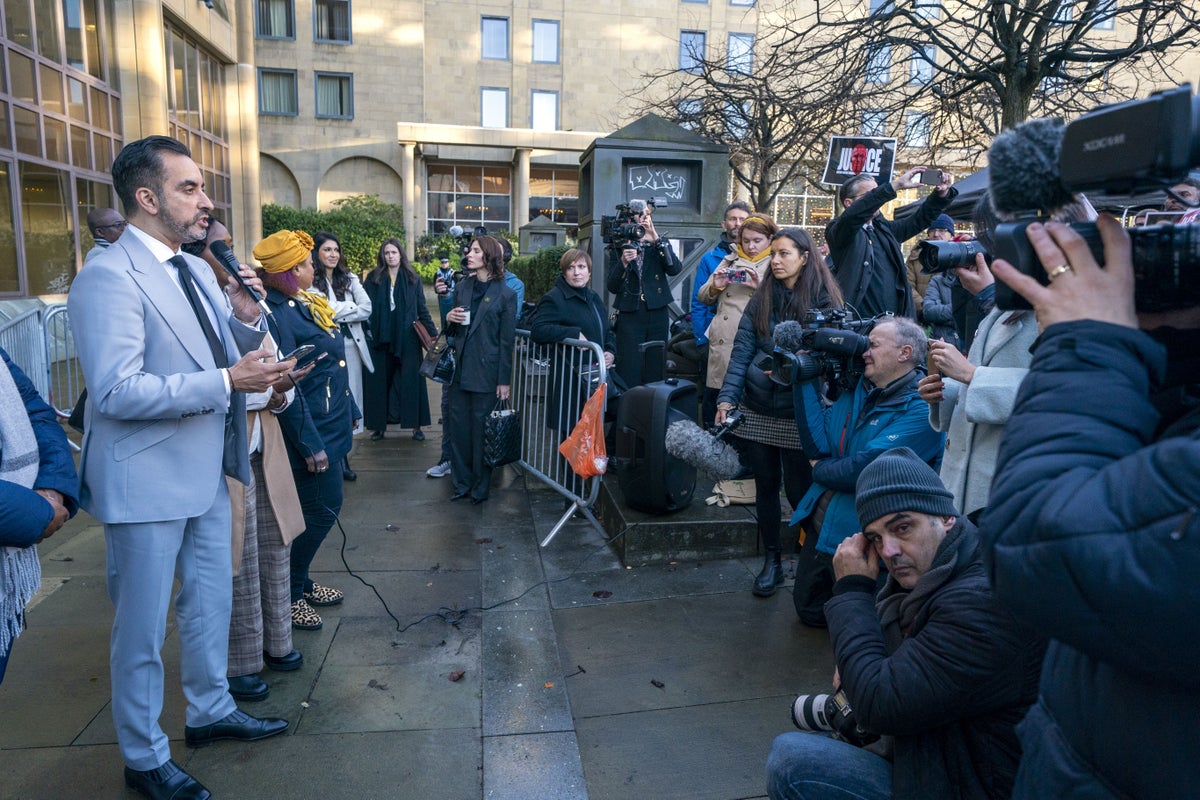
Being in restraints while being detained by police could increase the risk of “rapid death” from positional asphyxiation, the inquiry into the death of Sheku Bayoh has heard.
The inquiry resumed at Capital House in Edinburgh on Tuesday after the first round of hearings concluded in June.
Chaired by Lord Bracadale, Tuesday’s sitting heard evidence from Inspector James Young, who was the national co-ordinator for operational safety training (OST) for Police Scotland.
The inquiry was told how probation officers training at the Scottish Police College in Tulliallan were shown slides from a presentation given on positional asphyxiation.
One of the points outlined in the presentation said restraints “increased the risk” of “rapid death” from positional asphyxiation.
Senior counsel to the inquiry, Angela Grahame KC, asked Mr Young if this is something police would be aware of.
“Very much so,” Mr Young said.
“It can be caused by, even if a person is standing and pressure is put on a person, it’s not just about prone, it can be a number of different positions.”
He added: “This is one of the areas of use of force training that is constantly reinforced, from when I was in training.”
Upon taking up his post, Mr Young found there was a “disparate” approach to training following the amalgamation of Scotland’s eight police forces into Police Scotland in 2013.
Mr Young told the inquiry he could “not recall” trainee officers at Tulliallan being taught about the national framework on use of force.
He told the inquiry many were still using guidance from their legacy force following the establishment of Police Scotland and there had been little attempt to standardise the force’s approach to OST.
Mr Young undertook a review of training materials in December 2014 which concluded in 2015. He made 28 recommendations and the new guidance placed more emphasis on soft policing skills such as listening and de-escalation techniques.
This was not put into place until August 2016. When Mr Bayoh was arrested by officers at Hayfield road in Kirkcaldy on May 3 2015, he was handcuffed, put in leg and ankle restraints, battoned to the head at least twice, and sprayed with CS gas and PAVA spray.
Mr Young told the inquiry he was not able to source some of the advice given in the instructors’ manual, such as the clinical guidance for some of the medical advice contained in use of force guidance for instructors and police officers.
In 2014, Mr Young instructed that the instructors’ manual should no longer be used when training officers, and instructors should use the trainees’ manual as a reference going forward.
Mr Young said he was not aware of what training in equality and diversity officers were given prior to May 2015.
He told the inquiry race should not play a part in a risk assessment, and said he had worked with “colleagues across the globe to try identify best practice” which could be used to better inform the training of officers in Scotland.
Mr Young said that at the time he was not aware of public concern in Scotland about the use of force in relation to black men.
He told the hearing the data gathered by Police Scotland had not found any disproportionality in the use of force against black men.
“As a matter of fact, the only disproportionality I think identified was against males … I think there was higher proportion use of force against males but (males) only take up something like 50-49% of the population,” he said.
“That was the only disproportionality we ever identified, as far as I was concerned.”







